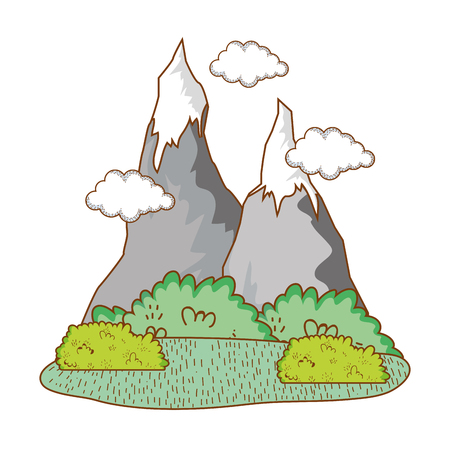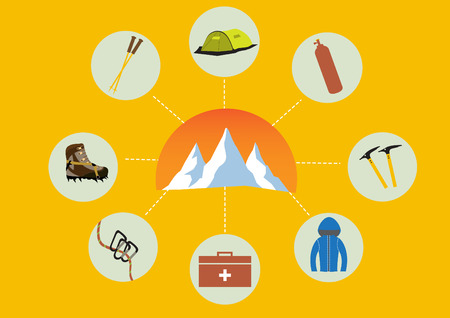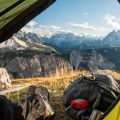Embracing the Wild: A Sense of Freedom in the Highlands
There is an unspoken poetry to wild camping in the Scottish Highlands—a gentle hush that falls as you step off the beaten track and into a world shaped by ancient glens, sweeping moors, and distant mountain silhouettes. Here, far from the press of city life and the routines that anchor us, the landscape opens wide and invites you to rediscover what it means to be truly free. The allure is not just in the sheer scale of nature’s grandeur, but in the quiet intimacy you find with every moss-carpeted knoll and wind-whispered loch. Each dawn in the Highlands offers a canvas washed with golden mist, while nightfall brings a tapestry of stars seldom seen elsewhere, making solitude here feel sacred rather than lonely. This is a place where time seems to slow, where your senses awaken to the subtle symphony of heather-scented breezes and curlews calling across the hills. Wild camping allows you to nestle directly into this untamed beauty—your tent becomes a gentle footprint among ancient stones and bracken, and every moment invites mindfulness and awe. The peace found beneath these vast Scottish skies lingers long after you’ve packed away your camp, reminding you that there is a quieter, wilder way to belong.
2. The Spirit of Leave No Trace
In the heart of the Scottish Highlands, where mist curls above ancient lochs and wild heather softens every footstep, the principle of Leave No Trace becomes more than just a guideline—it is an unspoken pact between nature and those who wander through it. Within the UK context, and especially in Scotland with its unique right to roam, Leave No Trace is woven into our outdoor culture, guiding both locals and visitors alike as they explore storied glens and sweeping moors. This ethos is not simply about tidying up after ourselves; it is about cherishing the land as if it were our own living room, ensuring that each tranquil scene remains untouched for generations yet to come.
Scotland’s wild camping tradition invites us to immerse ourselves in some of Britain’s most breathtaking landscapes. But with this privilege comes responsibility: to respect fragile ecosystems, protect wildlife habitats, and preserve the beauty that draws us here in the first place. In these spaces—where history lingers in the stones and water—every action carries weight. Whether we are pitching a tent beneath ancient pines or pausing to admire a stag silhouetted against dawn light, Leave No Trace reminds us that the smallest decisions can echo across centuries.
| Leave No Trace Principle | Why It Matters in the Highlands |
|---|---|
| Plan Ahead & Prepare | Helps reduce environmental impact and ensures safety in remote areas |
| Travel & Camp on Durable Ground | Prevents erosion of delicate moorland soils and protects rare flora |
| Dispose of Waste Properly | Keeps lochs, rivers, and woodlands pristine for all who visit |
| Leave What You Find | Preserves archaeological sites and natural beauty for future generations |
| Minimise Campfire Impact | Reduces risk of wildfires and protects peat-rich soil |
| Respect Wildlife | Safeguards native species like red deer and golden eagles |
| Be Considerate of Others | Nurtures the warm Highland welcome for which Scotland is renowned |
The spirit of Leave No Trace is at once practical and poetic—a gentle stewardship that sustains both land and soul. By embracing this code amidst Scotland’s legendary landscapes, we become part of a living story: one where respect for wild places ensures their enduring enchantment.

3. Respecting Local Culture and Access Rights
To truly embrace the wild spirit of camping in the Scottish Highlands, it’s essential to understand and honour Scotland’s unique Outdoor Access Code. Unlike many other places, Scotland gives everyone the right to roam—an invitation to explore its moors, lochs, and glens with freedom and a sense of shared guardianship. However, this privilege comes with responsibilities rooted in both law and local tradition. The code encourages campers to pitch up discreetly, away from homes and farmland, and always for just a night or two. It asks that we respect privacy, avoid disturbing livestock, and leave gates as we find them—a nod to the age-old trust between landowners and wanderers.
Beyond these guidelines are unwritten courtesies cherished by Scots: a gentle greeting on a misty trail, keeping voices low as dusk settles over heather fields, or simply pausing to admire the ancient landscape without leaving a mark. These small acts reflect a deeper respect for the land and those who call it home. By moving quietly and thoughtfully through the Highlands, we preserve not just the physical beauty of these wild spaces but also the cultural fabric woven by generations of locals and visitors alike. With every careful step, we honour Scotland’s open-hearted approach to wild camping—enjoying freedom while ensuring the land’s magic endures for all who follow.
4. Practical Tips for Protecting the Highlands
There is a certain poetry to wild camping in the Scottish Highlands: the whisper of heather beneath your boots, the mirrored silence of lochs at dawn, and the eternal sweep of moorland under ever-changing skies. But with this privilege comes a gentle responsibility. To preserve this breathtaking wilderness, every camper must tread lightly and leave no trace.
Aesthetic Wild Pitching
Choosing where to pitch your tent is as much about beauty as it is about protection. Seek out resilient ground—grassy spots away from delicate wildflowers or peat bogs—and avoid areas already showing signs of wear. Keep at least 100 metres from lochs and rivers to protect fragile water margins and give wildlife space. When you rise with the sun, make sure there is no evidence you ever slept beneath the stars.
Mindful Waste Disposal
The golden rule is simple: pack out what you bring in. Even biodegradable items like orange peels or tea bags can linger in these cool climes. Use a sealable bag for all litter and food scraps, and carry it back to civilisation. For human waste, dig a small hole at least 30 metres from water sources—cover it well and never leave toilet paper behind. This small act honours both the land and future wanderers.
| Aspect | Best Practice |
|---|---|
| Camp Location | Choose durable surfaces, away from paths and water sources |
| Litter & Food Waste | Carry all rubbish out with you in sealed bags |
| Human Waste | Bury at least 15cm deep, 30m from water; pack out used toilet paper |
| Campfires | Use a stove; if fires are permitted, keep them small & contained, clear up all traces afterwards |
| Group Size | Keep groups small to minimise impact on flora and fauna |
Considerate Campfires & Cooking
The scent of woodsmoke may be romantic, but campfires are best avoided in the Highlands where vegetation is slow to recover. Opt for a lightweight stove instead—it leaves no scars upon the earth. If you must light a fire, do so only in places where it is allowed, use dead wood sparingly, and always dismantle your fire ring before leaving. Scatter any ash thinly far from camp so the land remains unmarked.
A Gentle Presence Among Giants
Wild camping here is not just an adventure—it’s a dialogue with an ancient landscape. By following these practical yet aesthetic principles, every camper becomes part of the Highlands’ story: treading softly, cherishing silence, and ensuring that these hills remain wild and wondrous for generations to come.
5. Nature’s Whisper: Reflecting on Beauty and Belonging
Amidst the wild expanses of the Scottish Highlands, there is a quiet invitation to pause and notice the subtle wonders that surround us. Wild camping here is not only about adventure or escape—it is about awakening the senses to the soft mists that unfurl at dawn, veiling lochs and glens in silver. Each morning, as you unzip your tent, the world feels hushed; even the briefest silence is filled with promise. The plaintive call of curlews echoes across heathered moors, threading through the crisp air, reminding us of nature’s ancient rhythms.
To be present in this landscape is to belong—to feel gratitude for each fleeting moment. The north wind may dance playfully around your campsite, carrying with it whispers from distant peaks and stories woven into every stone. By treading lightly and embracing Leave No Trace principles, we honour these quiet marvels, ensuring they remain unspoilt for others who seek solace here.
There’s profound beauty in noticing the dew collecting on a blade of grass or watching sunlight break through rain clouds over Ben Nevis. These are gifts offered freely, urging us to slow down and appreciate life’s delicate details. In cherishing such moments—whether it’s brewing tea at sunrise or sharing laughter beneath a sky dusted with stars—we forge a deeper connection with both land and self. The Highlands teach us that belonging isn’t claimed; it is felt in humble presence and mindful gratitude for all that is wild and beautiful.
6. Sharing the Experience: Inspiring Others to Tread Lightly
As the sun sets behind the rugged peaks and the lochs mirror the changing sky, the Scottish Highlands whisper stories older than time itself. To wild camp here is to become part of that story—a fleeting guest in a landscape shaped by centuries of wind, water, and quiet resilience. Our greatest legacy as visitors is not only to leave no trace but also to nurture a culture where respect for these lands flourishes.
Stories That Spark Change
Every wild camping journey holds moments worth sharing—waking to a dawn mist rolling over heather-clad moors, or listening to the haunting call of a distant curlew. By recounting these experiences with friends, family, or fellow travellers, we do more than inspire wanderlust; we illuminate how treading lightly preserves such beauty for others to discover. The tales we tell become gentle reminders that every footprint matters.
Best Practices Passed On
Sharing practical wisdom is equally vital. Passing on tips about discreet pitching, responsible fire use (or better yet, going without), and careful waste management helps foster best practices among both seasoned campers and those new to wild camping in Scotland. A simple conversation at a bothy or a thoughtful social media post can spread awareness far beyond our own circle—each one reinforcing the Highland Code and Leave No Trace principles.
Gentle Reminders for Future Generations
The Highlands belong not only to us but to future generations and the wild creatures who call them home. We are stewards as much as adventurers. Whether through sharing captivating photographs, writing guides rooted in local knowledge, or quietly picking up litter left by others, our actions echo louder than words. Encouraging others to respect this land ensures that its magic endures—untamed, unspoilt, and ready to inspire all who follow in our footsteps.


